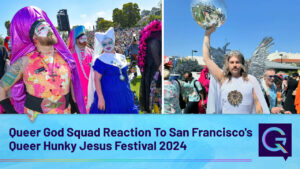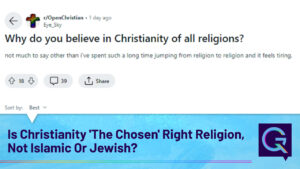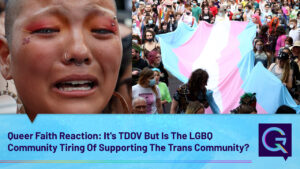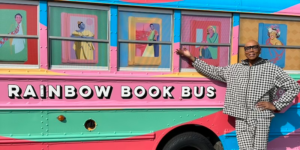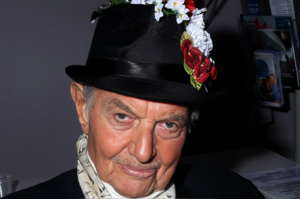The LGBTQI+ community today is doing much better than it was before.
However, the world has a long way to go and a lot to learn from the Netherlands. The Netherlands is the first ever country in the world to allow same-sex marriage.
The country has had a long and complex history with regard to LGBTQ+ rights and acceptance. As early as 1811, homosexuality was decriminalized, but restrictive rules still barred LGBTQ+ individuals from many aspects of public life. The first gay rights organization in the Netherlands was formed in 1946, and in the 1970s and 80s, the country saw a surge in gay rights activism and the emergence of the first Pride parades. In 2001, the Netherlands became the first country to legalize same-sex marriage, and in 2010 transgender individuals were finally allowed to change their legal gender without undergoing any type of surgery.
The present rich culture of the Netherlands comes from its equally rich and inclusive history and the social and political history of the European region.

LGBT History In Ancient Europe
There are records of people of the same sex participating in sexual activities since the “before Christ” era. In fact, in a lot of cultures it was considered very normal, and sometimes even preferred, to have partners of the same-sex something homophobic groups would not want to acknowledge.
The concept of homosexuality can be seen in documents from ancient Greece, where the concept of “male lovers” was very common. Famous philosophers like Plato and Aristotle have spoken about same-sex relations in their writings.
Plato saw homosexual practices as a depiction of democracy and believed that only barbarians would consider it “shameful” because they are ruled by people who are scared of the influence such “great ideas” or relationships would have on their subjects. Aristotle mentioned in Politics that the Celts considered homosexuality a special honor.
Some of the earliest records of transgender people were the worshippers of Goddess Cybele in ancient Rome. The adult male citizen in the Roman patriarchal society had a right to have same-sex relations openly with a male of lower standing in the society. There were no legal barriers to same-sex relations.
However, the mention of female partners and lesbians is almost non-existent in LGBT history. Some say this could result from the absence of a phallic object/symbol within these relationships, which might have been why most lesbian relationships might have gone under the radar. It is riveting to know that the society of that time allowed same-sex relations but did not consider basic women’s rights. Accepting same-sex relations among women was still a distant idea. Sadly, not much has changed in these decades.
We will explore this separately some other time.
LGBT History in the Netherlands
The history of the Netherlands is quite vast, and the LGBT history of the Netherlands is even bigger. It has taken years of striving for the LGBTQI+ community to reach where it is now in the Netherlands. We go back to the 18th and 19th Centuries when Sodomy was considered a capital crime and a lot of people were executed for performing acts of homosexuality. However, acts of sodomy committed by heterosexuals at the time were also considered a crime. In 1777, the narrative took a turn where it was recommended to educate boys and girls on the vices of same-sex relations in order to avoid the punishable crime that is Sodomy.
The year 1806 saw the rise of Holland as a kingdom under the rule of Napoleon’s brother. The kingdom adopted the liberal views of the French and soon after, in 1811, homosexuality was decriminalized. Homosexual activities were punishable only as public indecency till the year 1886. It was during this era that the Netherlands thrived and witnessed sexual freedom. At the same time, the stigma around same-sex relations and sodomy remained the same but the wheels of change were set in motion and nothing could stop it.
Netherlands History
In 1911, laws against abortion, prostitution, pornography, and same-sex acts with minors under 21 were passed. Talks of homosexuality and sexual orientation became even more popular during this period and the Christian parties could do nothing to prevent this dialogue in 20th century Netherlands. It is human nature to want something you cannot have and to do something you’ve been told not to do. Article 248bis which set the age of consent for homosexuals at 21 was an obvious discriminatory law that gave birth to a new subculture for the LGBT community. The red-light districts were chock-full of bars and pubs that became regular hangout spots for gay and lesbian folk.
The post-world war II climate saw a complete change in the attitude towards homosexuality. Homosexuality was now condemned by many. However, the thought process changed again when a few clergymen and doctors began questioning the basis of a homosexual relationship and started comparing it to heterosexual relations. At the end of the day, the one common factor in their evaluation of these relationships was love. This gave rise to the sexual revolution in the Netherlands and a number of legal reforms led to the country becoming one of the most progressive ones in the world.
Although LGBTQ+ rights and acceptance have come a long way in the Netherlands, there was still significant work to be done in order to ensure that all members of the LGBTQ+ community have equal rights and access to resources. However, 2023 came with some good news.
What happened in 2023?
The Upper House of the States General of the Netherlands, the supreme bicameral legislature of the kingdom, on Wednesday, voted to amend Article 1 of the Dutch Constitution, expanding it to prohibit discrimination against someone because of a disability or sexual orientation.
In a 56–15 vote in the Dutch Senate, the proposal for amendment passed and is now headed to King Willem-Alexander for his royal assent and the Dutch government. Once approved it will be published in the Staatscourant, the official government publication that formally announces new laws in the kingdom. LGBTQ+ advocacy groups and activists celebrated the vote.
According to COC Nederland, enshrining the rights of LGBTI people in the constitution is a “historic victory for the rainbow community.” The Dutch LGBTQ+ rights group was founded in 1946 and is considered the oldest existing LGBTQ+ organization globally.
Dutch media outlet NL Times noted that Article 1 states that everyone in the Netherlands “shall be treated equally in equal circumstances.” The following sentence goes on to explicitly mention several examples, including “religion, belief, political opinion, race or sex.” That list will now be expanded.
The procedure for such an adjustment takes years because it has to be voted on several times. With the Senate’s vote, that process has now been completed.
Author



